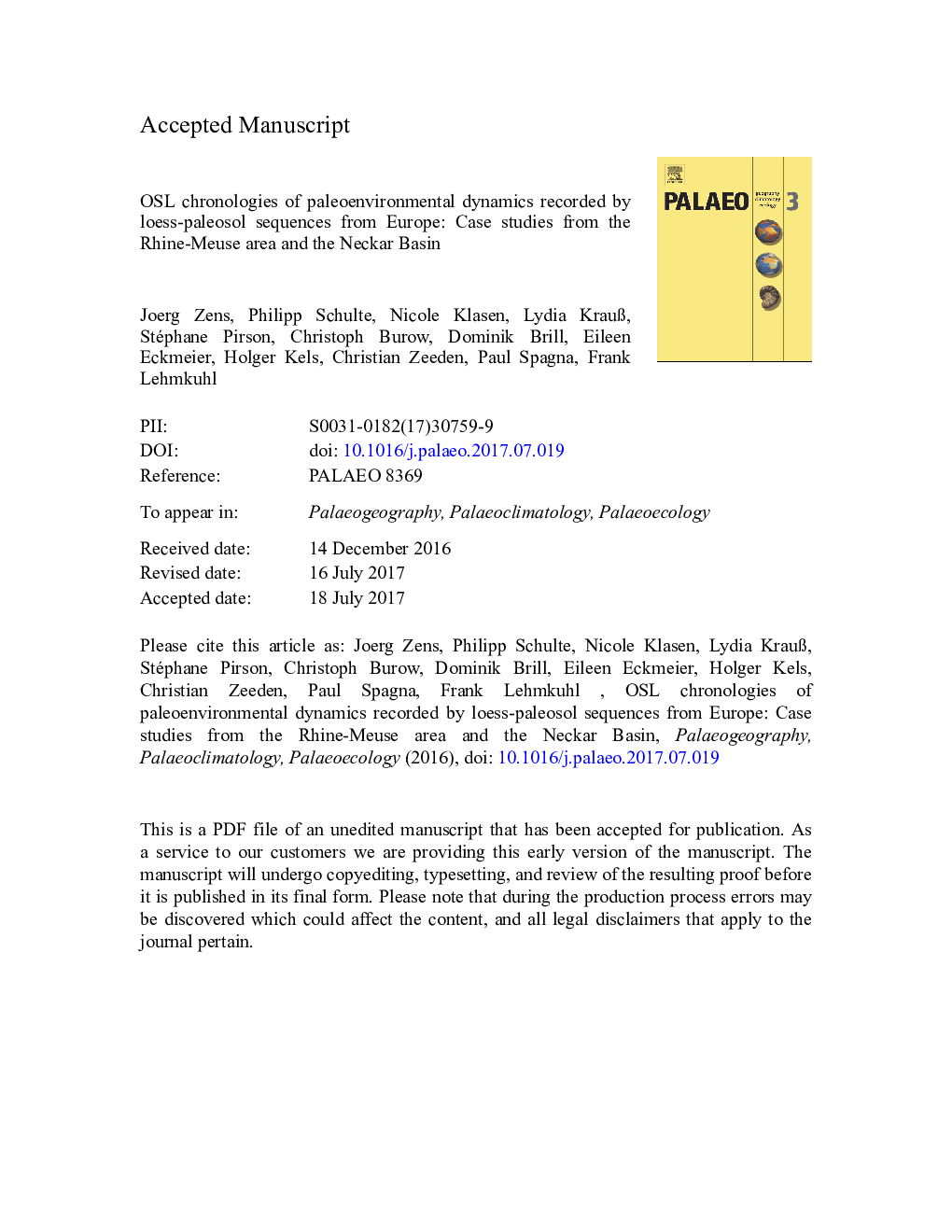| Article ID | Journal | Published Year | Pages | File Type |
|---|---|---|---|---|
| 10223632 | Palaeogeography, Palaeoclimatology, Palaeoecology | 2018 | 73 Pages |
Abstract
The OSL ages are evaluated as being robust and consistent with other records. Furthermore, we show that ages for hillslope deposits are sometimes overestimated due to low-frequency high-magnitude erosive processes. The integration of OSL ages, stratigraphy and high-resolution grain-size data contributes to a temporal more complete data record from Western and Central Europe. Secondly, we propose a combined stratigraphic model for LPS of the Last Glacial cycle, which is developed and discussed in the context of other key sites such as Havrincourt, Schwalbenberg II, Tönchesberg, Nussloch and Dolni VÄstonice. Comparable chronologies and patterns in proxy data between sites with a large spatial distance suggest a possible semi-synchronous response to climatic changes in Europe. By combining our data with the Eifel-Laminated-Sediment-Archive (ELSA) and the NGRIP ice core, a relationship of loess archives and large-scale climatic signals is discussed and a proxydata based event-stratigraphy is developed. This model refines existing chronostratigraphic models and contributes to solve open discussion concerning the timing and demarcation of sedimentary units and sequences from for Western and Central Europe.
Related Topics
Physical Sciences and Engineering
Earth and Planetary Sciences
Earth-Surface Processes
Authors
Joerg Zens, Philipp Schulte, Nicole Klasen, Lydia KrauÃ, Stéphane Pirson, Christoph Burow, Dominik Brill, Eileen Eckmeier, Holger Kels, Christian Zeeden, Paul Spagna, Frank Lehmkuhl,
